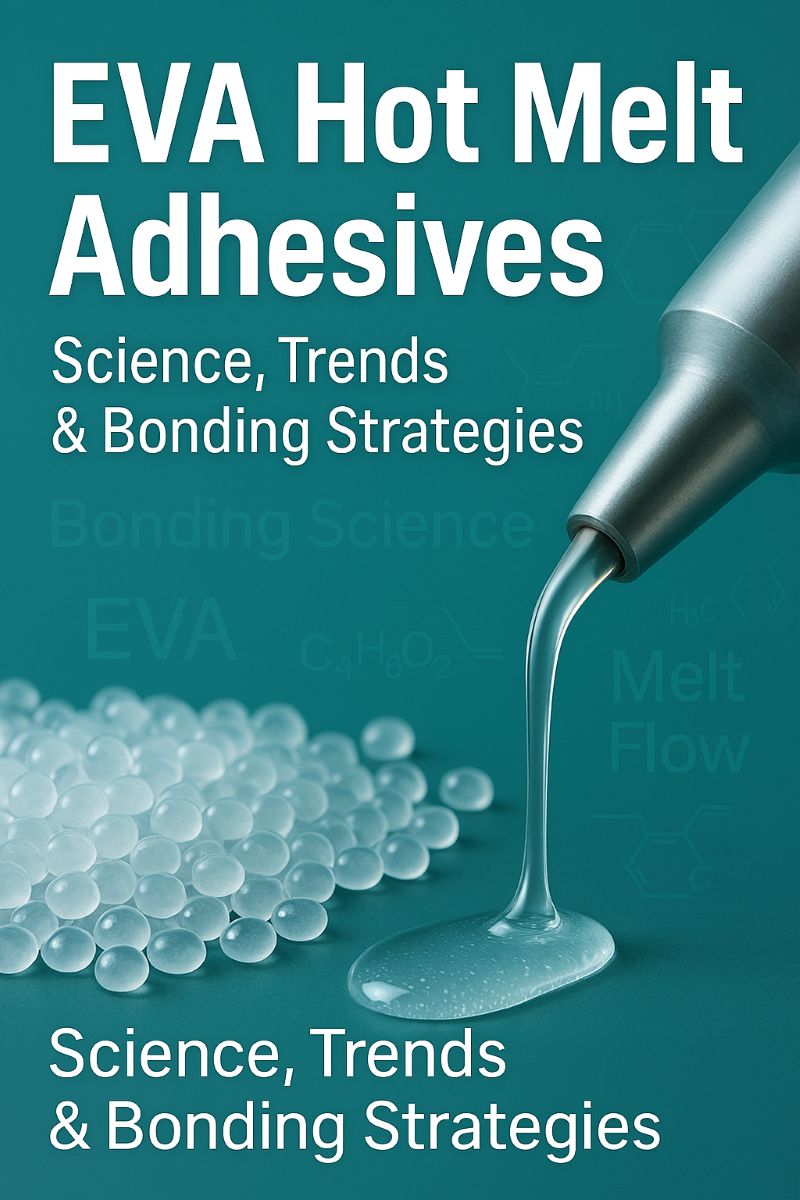
Ethylene Vinyl Acetate Overview
Types of Hot Melt Adhesives
Importance of Adhesive Science
Methods of Adhesive Application
Latest Trends in EVA Adhesives
Strategies for Effective Bonding
Future of EVA Hot Melt Adhesives
Frequently Asked Questions (FAQ)
Ethylene Vinyl Acetate (EVA) is a versatile polymer well-known for its use in hot melt adhesives. Its unique blend of flexibility and toughness makes it ideal for a range of applications, from packaging to woodworking. EVA hot melt adhesives offer excellent bonding performance on various surfaces, ensuring durability and strength. These formulations are commonly used across industries where reliability and process efficiency are critical.
Hot melt adhesives come in various types, each suited for different applications. EVA-based hot melts are particularly valued for their adaptability and reliable bonding. Ideal for use in packaging, woodworking, and general assembly, EVA adhesives deliver consistent results in both industrial and craft settings. Choosing the right adhesive depends on understanding the performance characteristics required for your specific application, including temperature resistance, flexibility, and bonding strength.
A solid understanding of adhesive science is essential to maximizing the performance of EVA hot melt adhesives. Knowledge of bonding principles helps users refine application techniques and select suitable adhesive grades for different substrates and conditions. EVA adhesives are prized for their balance of performance and ease of use, enabling effective solutions across packaging lines, woodworking shops, and automated assembly operations.
Several methods are used to apply EVA hot melt adhesives, each offering unique benefits:
Roll coating delivers even adhesive distribution for large flat surfaces.
Spray application allows for flexible coverage, ideal for irregular or detailed designs.
Slot die coating provides controlled and precise application in high-speed production environments.
Each method contributes to enhanced bond integrity and efficiency when properly matched to the project or production setting.
EVA hot melt adhesives are evolving in line with industry needs for higher sustainability and advanced performance:
Bio-based formulations are reducing the environmental impact of adhesives.
Improved thermal stability allows for more demanding applications in fluctuating temperatures.
Fast-setting technologies are shortening cycle times, especially in automated production lines.
These trends are making EVA adhesives more competitive and essential in sectors requiring high-speed, eco-conscious solutions.
Maximizing the effectiveness of EVA adhesives involves a few key strategies:
Proper surface preparation: Ensure all surfaces are clean, dry, and free of contaminants.
Correct adhesive selection: Match adhesive grade to the application environment and substrate type.
Controlled application: Monitor temperature, pressure, and speed to achieve uniform and strong bonds.
Implementing these practices results in more consistent outcomes, reduced rework, and extended product lifespan.
The future of EVA hot melt adhesives is centered on innovation and environmental responsibility. Advancements include:
Eco-friendly ingredients that support regulatory compliance and sustainability goals
Faster curing adhesives for improved production throughput
Versatile bonding capabilities for new materials and hybrid assemblies
These developments are expanding EVA’s applicability from traditional sectors into emerging technologies and complex manufacturing environments.
What is Ethylene Vinyl Acetate (EVA)?
EVA is a flexible, durable polymer widely used in hot melt adhesives for applications like packaging and woodworking.
What are the key benefits of EVA hot melt adhesives?
They offer strong adhesion to diverse materials, fast setting times, and ease of use in both manual and automated applications.
What types of hot melt adhesives are available?
Main types include EVA, polyolefin, polyurethane (PUR), and polyamide, each suited for specific performance needs.
Why is adhesive science important?
Understanding adhesive behavior improves application accuracy, material compatibility, and long-term performance of bonds.
What are common methods for applying EVA adhesives?
Popular methods include roll coating, spray application, and slot die coating, depending on surface shape and production speed.
What trends are emerging in EVA adhesives?
Trends include bio-based materials, fast-setting technology, and enhanced temperature resistance for broader industrial use.
How can I ensure effective bonding with EVA adhesives?
Focus on clean surfaces, appropriate adhesive selection, and consistent application controls for optimal results.
What does the future hold for EVA hot melt adhesives?
Future developments aim at sustainability, efficiency, and versatility, making EVA adhesives ideal for both legacy and next-gen manufacturing.